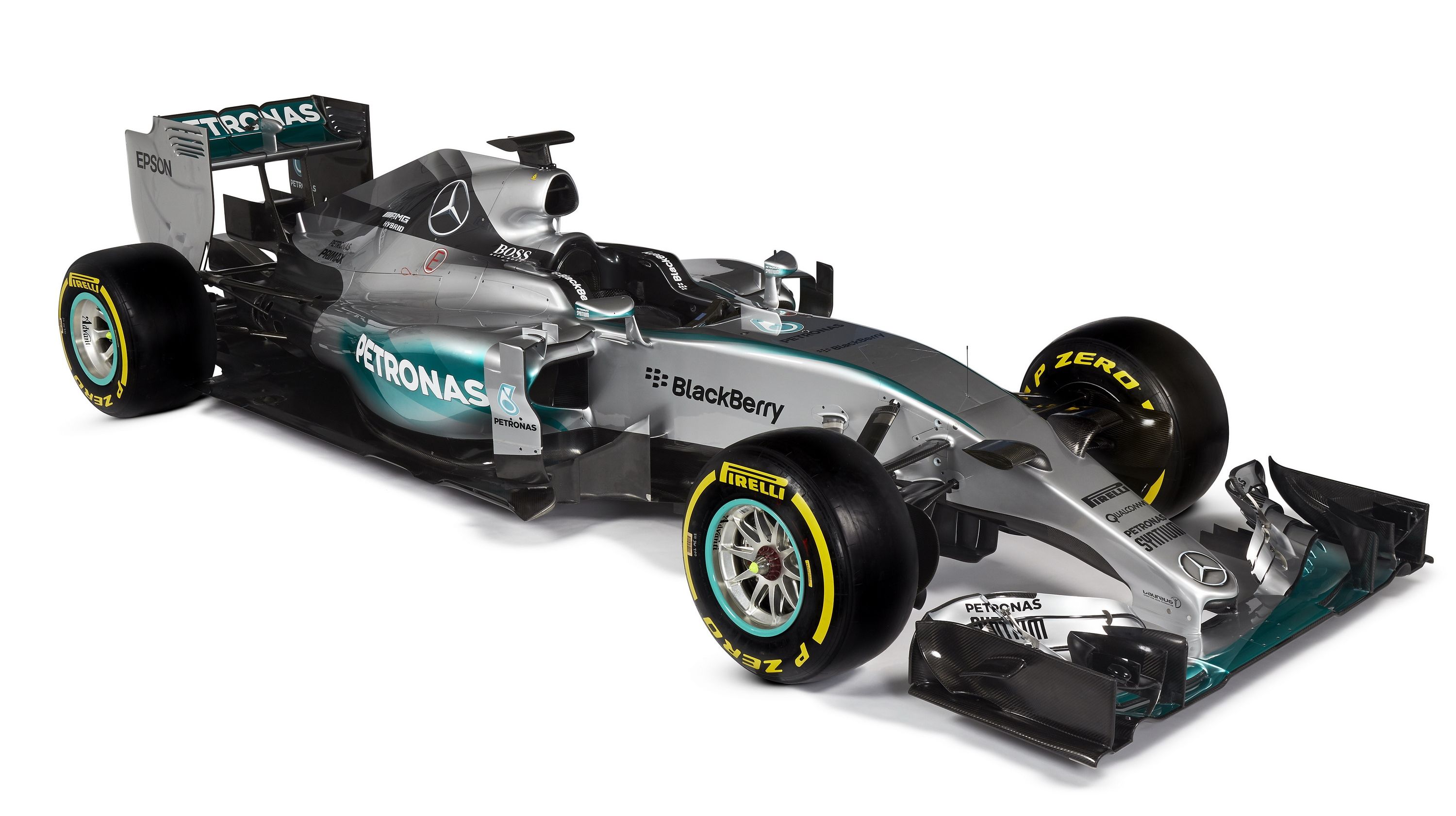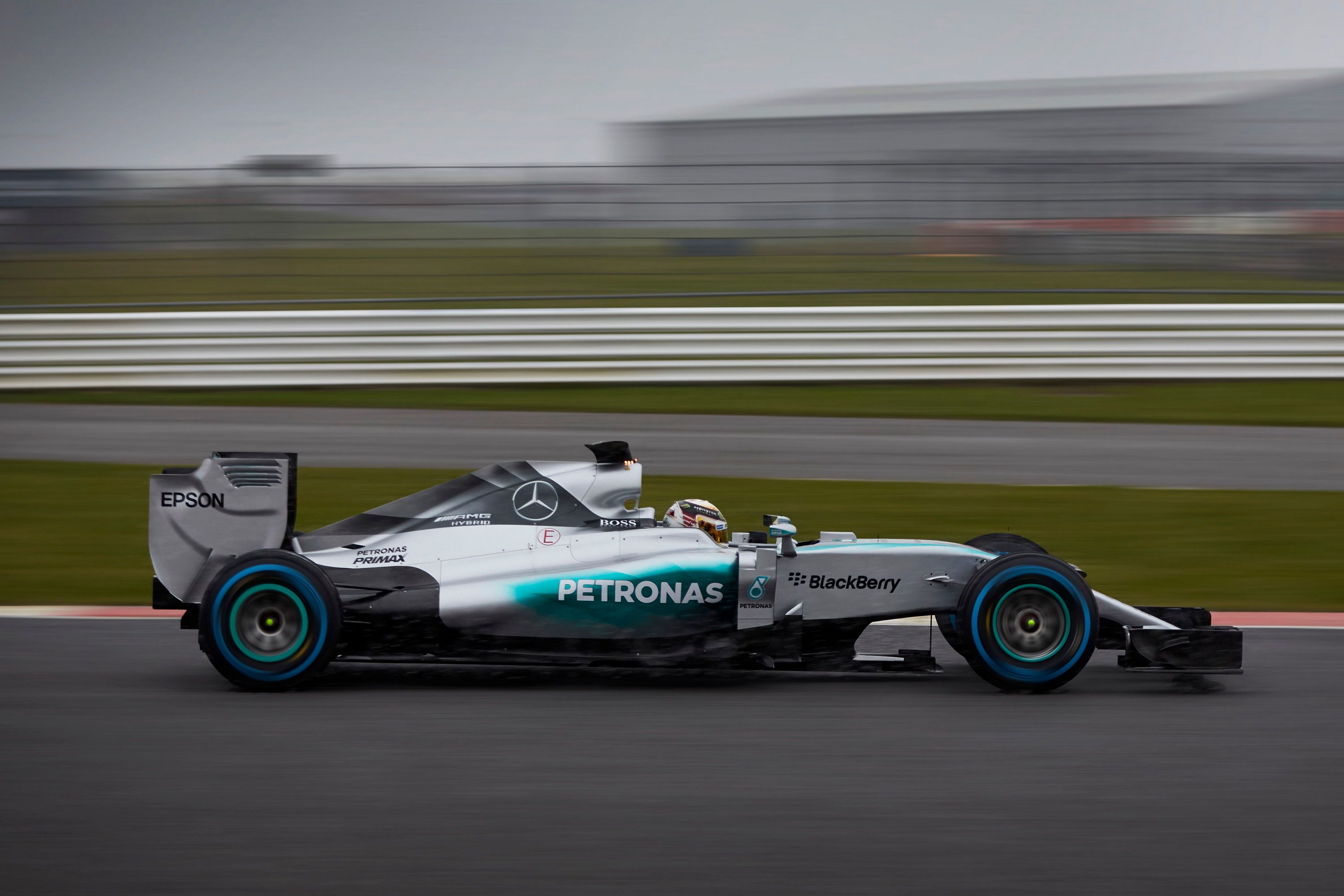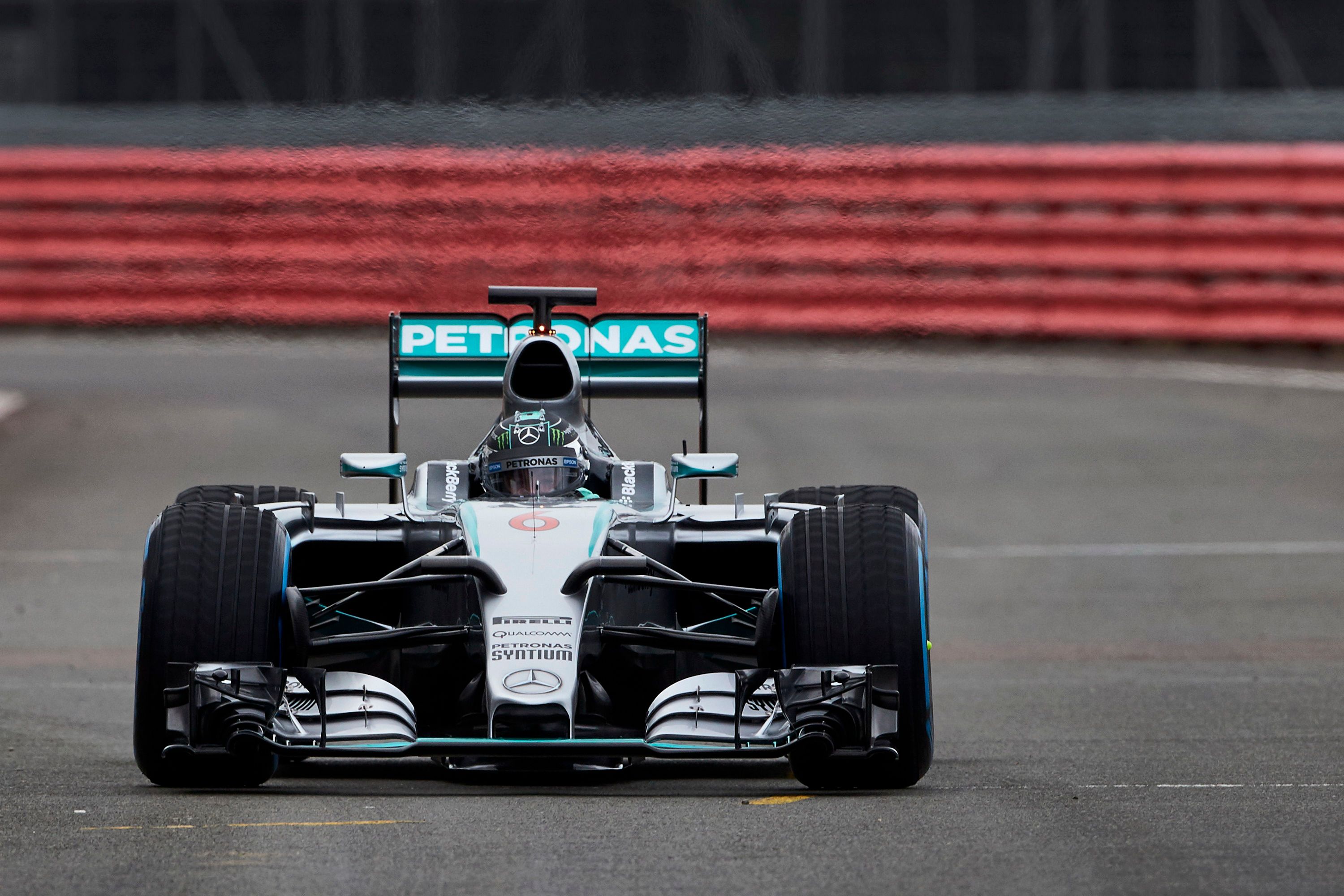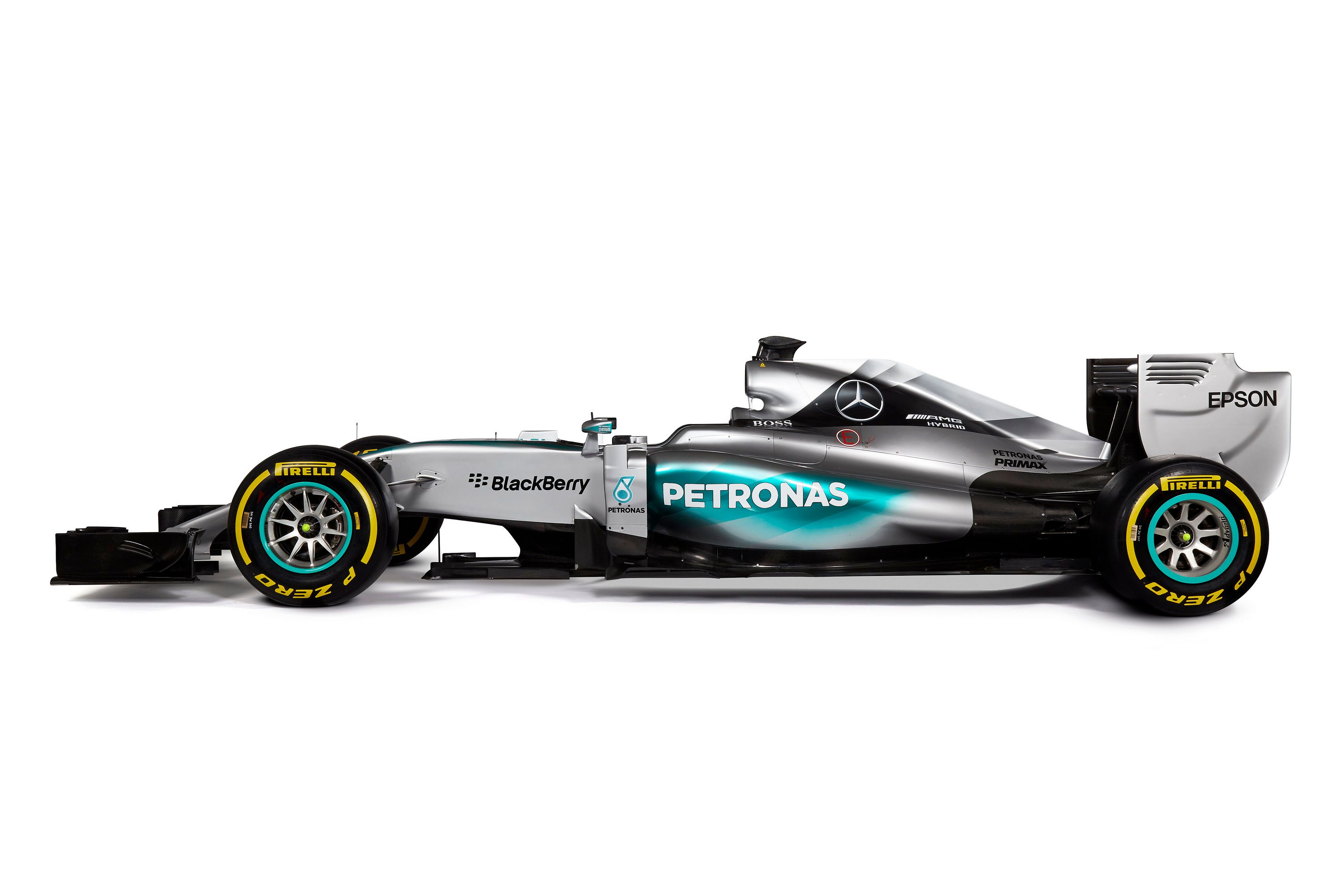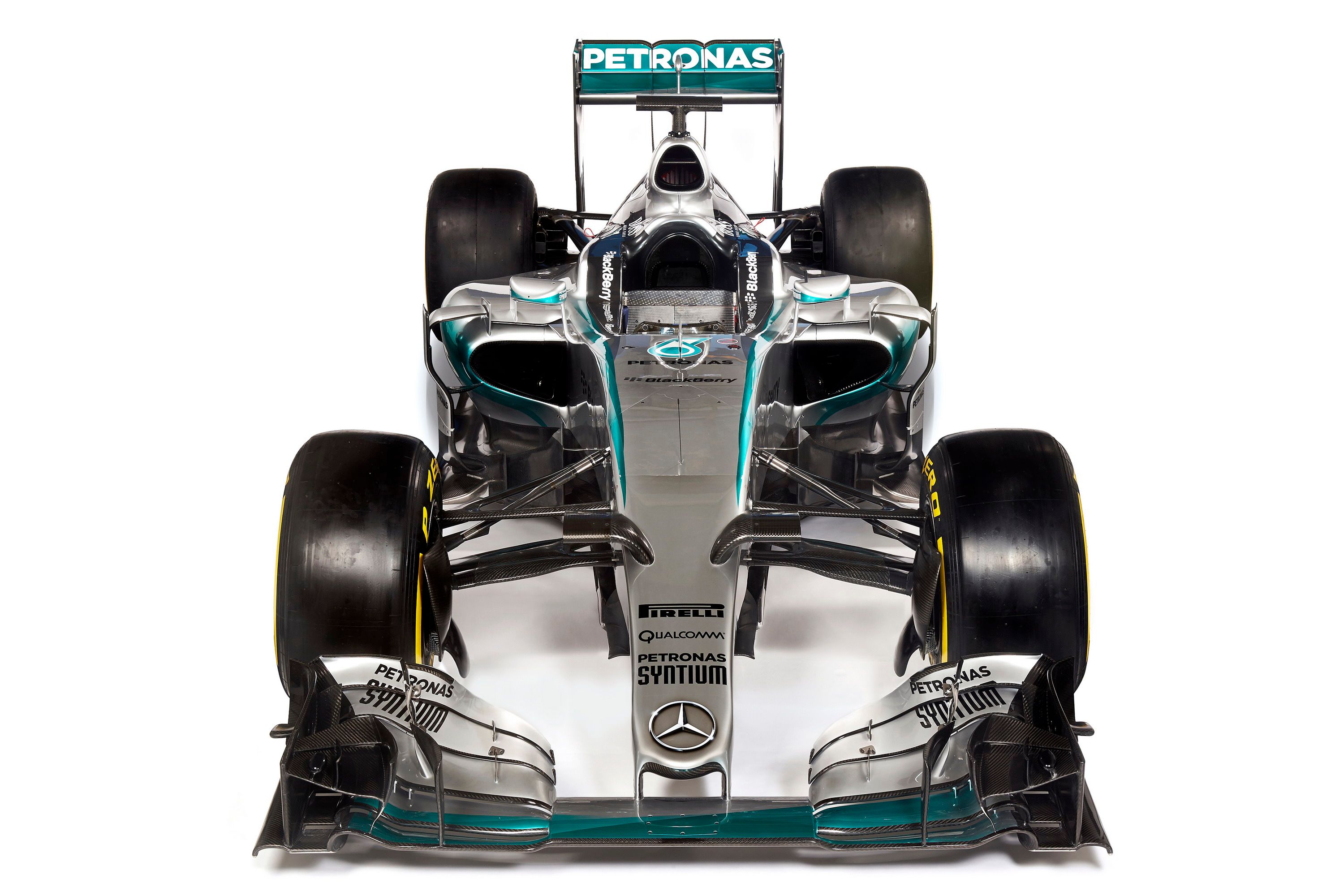With a motorsport history that in some ways goes back to the first "horseless carriage" race in 1894, when two Daimler-powered vehicles shared first place after being driven from Paris to Rouen, Mercedes-Benz->ke187 has almost always been involved in racing. Its latest Formula One->ke190 endeavor started in the 2010 season, when the German carmaker bought a stake in the former Brawn GP team, increasing its presence in the sport and switching from just another engine supplier to a full-blown team owner.
Officially called Mercedes-AMG Petronas, the somewhat new F1 team managed to not only win both the constructor's and driver's championships in 2014, but it did so while displaying an unprecedented level of domination in the sport. With a predecessor that won 16 out of a total of 19 races and finished on-podium in every single race, the 2015 Mercedes-AMG F1 W06 Hybrid has a pretty tough season ahead. The new single-seater represents more of an evolution than a revolution compared with last year's runner, especially since most of Formula 1 regulations have been largely kept in place for the 2015 season.
Click past the jump to read more about the Mercedes-AMG Petronas F1 W06 Hybrid.
mercedes-amg-petronas-f1-w06-hybrid
- Make: Array
- Model: mercedes-amg-petronas-f1-w06-hybrid
2015 Mercedes-AMG Petronas F1 W06 Hybrid
- Make: Array
- Model: 2015 Mercedes-AMG Petronas F1 W06 Hybrid
- Engine/Motor: V6
- Transmission: Eight-speed forward, one reverse unit
Exterior
After regulations for the 2014 F1 season produced some of the ugliest single-seaters in history, 2015 brings some much-needed changes in this department. On the other hand, the 2014 W05 F1 Hybrid didn't sport a so-called "finger nose," albeit it did feature what was probably the shortest nose on the grid. The new 2015 W06 F1 Hybrid has taken its predecessor's design and implemented it slightly differently, resulting in a new interpretation of the "short nose" that looks much slimmer. Speaking of the new front end, the model also features a new front wing and an even more pronounced aerodynamic integration of two camera pods right before the innovative front suspension arms.
There aren't many "in your face" modifications to the middle of the car, but the rear is where another obvious visual difference is found. Unlike the car from last season, the new W06 F1 Hybrid has moved its rear wing to a central pillar configuration for both aerodynamic and structural reasons, according to Paddy Lowe, technical director for Mercedes-AMG F1. As always, the way the model looks right before the season starts may evolve, so expect the new W06 F1 Hybrid to incorporate modifications in aerodynamics during the 2015 championship.
Exterior Dimensions
|
Overall Length |
5,000 MM (196.85 Inches) |
|
Overall Width |
1,800 MM (70.86 Inches) |
|
Overall Height |
950 MM (37.40 Inches) |
|
Overall Weight |
702 KG (1,547 LBS) |
Interior
Most Formula One interiors are off-limits to photographers for not leaving much room around the driver, and it is safe to say that the the new Mercedes-AMG single-seater will make no exception to that rule. That being said, the car will feature carbon-fiber seat moulded around the driver, while the steering wheel will still look like a christmas tree, engulfed in LED lights and different-colored switches.
Drivetrain
As some of you know, 2014 was the first Formula One season wherein cars switched to single-turbocharged V-6 engines augmented by electric motors.->ke147 In fact, the new engines aren't even called "engines" anymore, but "power units." The W06 F1 hybrid's power unit is largely based on the 2014 model, which was universally regarded as the most powerful on the grid. In other words, although Ferrari and Renault in particular are said to have somewhat caught up with their own power units, the one in the Mercedes should still be the most powerful one out there.
With a displacement of 1.6-liters and a split turbocharger that has the compressor at the front of the cylinder vee and the exhaust-driven rotor at the end, the Mercedes-Benz engine offers a number of advantages compared to the other powerplants in F1, apart from a higher output. One of the most important ones is that, thanks to its quirky turbocharger design, it allows for a smaller intercooler, which in turn means that the car has smaller sidepods and is therefore more aerodynamic, while another is that the transmission can sit more forward, offering a better center of gravity.
Drivetrain Specifications
|
Power Unit Specification |
|
|
Type |
Mercedes-Benz PU106B Hybrid |
|
Minimum Weight |
145 kg |
|
Power Unit Perimeter |
Internal Combustion Engine (ICE) |
|
Motor Generator Unit - Heat (MGU-H) |
|
|
Power Unit Allocation |
Four Power Units per driver per season |
|
Internal Combustion Engine (ICE) |
|
|
Capacity |
1.6 liters |
|
Cylinders |
Six |
|
Bank Angle |
90 |
|
No of Valves |
24 |
|
Max rpm ICE |
15,000 rpm |
|
Max Fuel Flow Rate |
100 kg/hour (above 10,500 rpm) |
|
Fuel Injection |
High-pressure direct injection (max 500 bar, one injector/cylinder) |
|
Pressure Charging |
Single-stage compressor and exhaust turbine on a common shaft |
|
Max rpm Exhaust Turbine |
125,000 rpm |
|
Energy Recovery System (ERS) |
|
|
Architecture |
Integrated Hybrid energy recovery via electrical Motor Generator Units |
|
Energy Store |
Lithium-Ion battery solution, between 20 and 25 kg |
|
Max energy storage/lap |
4 MJ |
|
Max rpm MGU-K |
50,000 rpm |
|
Max power MGU-K |
120 kW (161 hp) |
|
Max energy recovery/lap MGU-K |
2 MJ |
|
Max energy deployment/lap MGU-K |
4 MJ (33.3 s at full power) |
|
Max rpm MGU-H |
125,000 rpm |
|
Max power MGU-H |
Unlimited |
|
Max energy recovery/lap MGU-H |
Unlimited |
|
Max energy deployment/lap MGU-H |
Unlimited |
Competition
McLaren-Honda MP4-30
While in 2014 the British team was still using Mercedes-Benz as an engine supplier, for 2015 it switched to Honda, marking the Japanese carmaker's return to Formula One. At least for its maiden season, Honda will be exclusively dedicated to McLaren and the MP4-30 single seater, meaning that every power unit upgrade over this championship's course will only benefit the McLaren team.
In the 2014 season, depite being powered by the best engine on the grid, McLaren didn't quite manage to live up to its former glory, but it has much higher goals in 2015. Some of the goals are backed up by having not one, but two former F1 world champions as drivers, both of which bring a lot of experience and talent to the team. On the other hand, this is Honda's first year since their return, and not all things may go as planned once the 2015 season starts.
Ferrari SF15-T
Featuring an all-new nose and front wing, the 2015 Ferrari->ke252 SF15-T is said to also feature a much improved power unit in terms of overall output. Despite the 2014 season being one of the worst in Ferrari's history, it is expected that 2015 may take a turn for the better, especially since the Italians will also have an all former world champion driver lineup.
Naturally, things don't change overnight, and even the Scuderia doesn't think that it will beat Mercedes-AMG Petronas this year, but things are said to have changed drastically in terms of car development over the winter. First tests at Jerez looked pretty good for the SF15-T single-seater, as Vettel did the best time and put in a reasonable number of laps in the first two days.
Conclusion
Sporting an evolutionary design, the new Mercedes-AMG Petronas single-seater is said to have been improved in all major areas. With the best powerplant on the grid now offering even more power, and using an aerodynamic package that will probably be copied by more than just a couple of teams in 2015, the new W06 F1 Hybrid is seen by many as the car to beat this season. On the other hand, Mercedes-AMG's biggest threat may come from within, as the team's only downsides in the 2014 season were either caused by reliability problems or the brotherly battle between Nico Rosberg and Lewis Hamilton. Since the 2015 season will feature one extra race, and with even more draconian reliability regulations in place, the fate of the W06 F1 Hybrid in terms of overall performance is yet to be seen.

